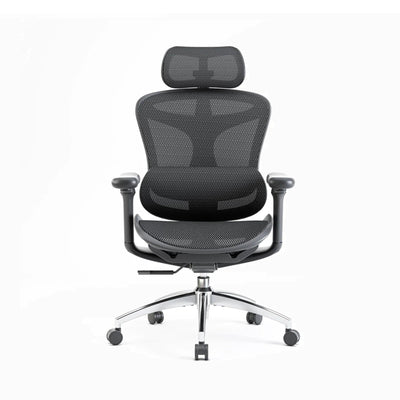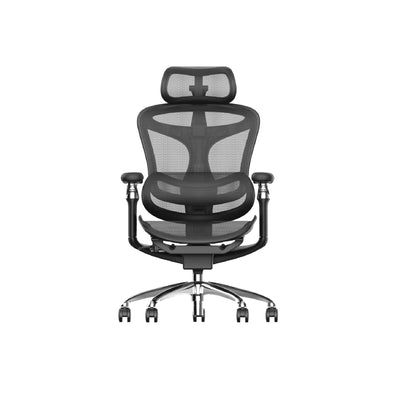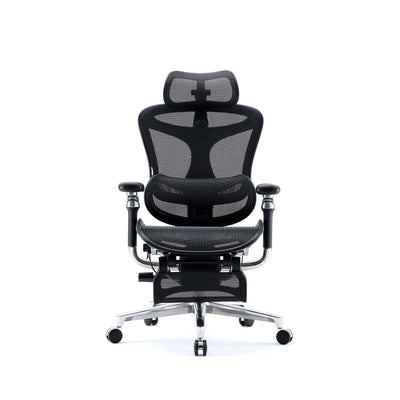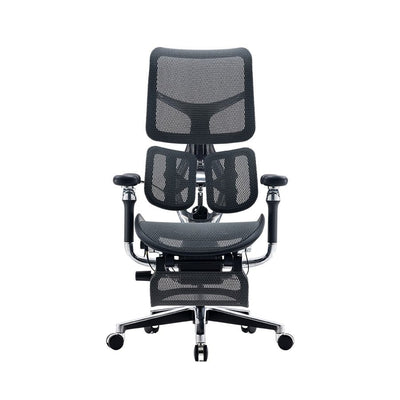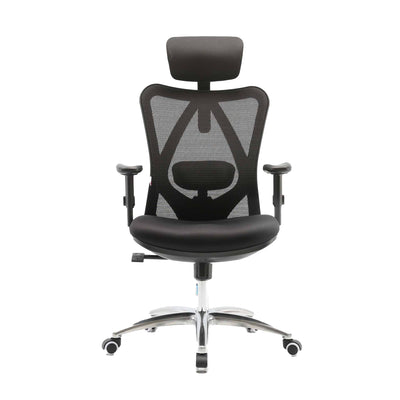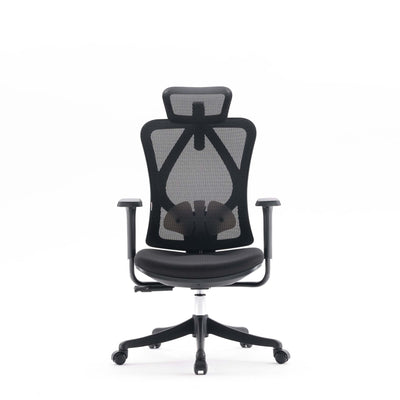
Once upon a time, the guest bedroom was simply that — a spare room waiting for visitors. But with flexible work now a part of everyday Australian life, that underused space can serve a far greater purpose. Transforming it into a dual-function area allows you to balance productivity with hospitality. The goal is to create a guest bedroom home office that’s smart, stylish, and comfortable — a place that works hard during the week yet still feels inviting when friends or family come to stay.
1. Start with a clear vision
Before buying furniture or rearranging layouts, decide exactly how you’ll use the space. Will it be your main office, or more of an occasional workspace? Do you host guests regularly, or only once or twice a year? Once you’ve defined your priorities, it’s easier to balance function and warmth.
If you’ll spend most of your time working here, design primarily for productivity and include flexible sleeping options. If guests are your focus, keep the office zone compact and easily tucked away. Creating subtle “zones” — one for work and one for relaxation — helps you mentally shift gears between focus and downtime.
2. Choose furniture that works twice as hard
When your spare room must multitask, every item of furniture needs to earn its place. Start by selecting pieces that adapt seamlessly between work and rest.
A daybed is a wonderful investment. It looks elegant, serves as a cosy reading nook during the day, and quickly converts into a comfortable bed for overnight guests. If you prefer something more spacious, a sofa bed offers extra flexibility without taking up permanent room. For small homes or apartments, a Murphy bed that folds into the wall creates instant floor space and gives your office area a clean, uncluttered look.
Next, add a compact desk that complements the room’s design. A wall-mounted or ladder-style desk maintains an open, airy feel while providing just enough workspace. Pair it with an ergonomic office chair that supports proper posture but still suits the décor. Brands like Sihoo design ergonomic chairs that balance support and style, ensuring your setup looks as good as it feels.
3. Plan clever storage
A hybrid space succeeds or fails based on how well it’s organised. Since you’ll need to store both work supplies and guest essentials, invest in smart storage solutions that blend seamlessly into the design.
Opt for dual-function storage such as an ottoman with hidden compartments, a bed with built-in drawers, or a tall shelving unit with decorative baskets. These let you keep office items neatly tucked away when guests arrive. Label storage boxes to make transitions simple: one for “work mode” with stationery and cords, and one for “guest mode” with fresh towels and linens.
If you have the space, a built-in wardrobe can also be divided into two zones — half for business, half for bedding. The trick is keeping everything accessible yet discreet.
4. Set the mood with a calming colour palette
Colour has a powerful effect on how a space feels. A guest bedroom home office should feel both calm and energising, so choose tones that bridge the gap between productivity and comfort.
Soft, neutral shades such as warm beige, muted sage, or dusty blue create an elegant, restful base. These colours encourage focus without feeling cold or sterile. If you’d like to define your workspace visually, paint one feature wall in a slightly deeper hue to signal the “office zone”. Add character with cushions, throws, or artwork that can easily be refreshed with the seasons.
5. Light it right
Lighting can completely transform the purpose and mood of a room. For working hours, natural light and crisp task lighting are essential. For guests, warm, dimmed lighting creates a sense of comfort and tranquillity.
Layer your lighting for versatility: ambient light from the ceiling for general brightness, a task lamp for focused work, and a soft bedside lamp for evening relaxation. Smart bulbs or dimmers make it easy to adjust brightness and warmth to match the moment. If possible, place your desk near a window — natural light enhances concentration and lifts your mood.
6. Keep it stylish — and still homely
A home office doesn’t need to look corporate. In fact, a room that feels too formal can clash with the warmth expected of a guest bedroom. Keep styling simple and cohesive with the rest of your home’s aesthetic.
Introduce personal touches such as framed prints, potted plants, or a favourite candle. These details bring warmth without cluttering your workspace. Choose décor that inspires you but doesn’t distract.
When it comes to seating, prioritise both form and function. Investing in best ergonomic chairs or other quality office chairs ensures lasting comfort and proper support during long work sessions, while maintaining a refined look that complements your guest-friendly design.
7. Conceal the tech for a calm look
Nothing disrupts the calm of a multipurpose space faster than visible cables and bulky devices. To maintain a tidy, peaceful aesthetic, use wireless accessories wherever possible and keep chargers or electronics stored out of sight when not in use.
If you rely on a printer, consider hiding it in a cabinet or wardrobe. Store laptops and monitors in drawers or stylish baskets at day’s end. This keeps your guest area feeling uncluttered, ensuring visitors aren’t greeted by a mess of cords.
A minimal approach to technology helps the room transition smoothly between workdays and weekends.
8. Create a guest-ready experience
Even if you only host occasionally, your guests deserve a warm welcome. Make sure the room still feels considered and comfortable once the workday is done.
Start with fresh sheets, plump pillows, and a cosy throw blanket. Keep a small basket of essentials like towels, bottled water, and light snacks for a hotel-inspired touch. Providing a few empty drawers or hangers shows thoughtfulness and allows guests to unpack and relax.
Little details go a long way: a bedside lamp, a candle, or a magazine make the room feel homely and cared for. These finishing touches help your guests unwind — even if your laptop lives just a few metres away.
9. Maintain healthy work-life boundaries
When your workspace shares a room with your relaxation zone, it’s easy for boundaries to blur. Establish daily rituals that help you mentally “leave the office” when your workday ends.
Store away your laptop, turn off notifications, and switch the lighting from bright white to soft warm tones. Some people like to light a candle or play music as a signal that the workday is officially over. Creating these small transitions prevents burnout and helps keep your home a peaceful sanctuary.
If your guest room is near your bedroom, try to avoid late-night work sessions. A consistent routine is key to keeping your professional and personal life balanced.
10. Think long-term comfort and design
As you design your new space, think beyond the immediate future. Your lifestyle or needs may change, so choose pieces that are durable and flexible.
High-quality finishes, neutral colours, and timeless silhouettes will ensure the room evolves effortlessly. You might use it as a study today, a nursery later, or even a reading lounge in years to come. Choosing classic, adaptable furniture means your investment continues to serve you beautifully.
11. Add personality and texture
Finally, make the space feel distinctly yours. Add subtle layers of texture — linen curtains, a woven rug, or soft cushions that echo your home’s palette.
Display one or two personal items, such as a framed photo, coastal artwork, or a handmade ceramic bowl. These pieces add charm and tell a quiet story about you.
When the design feels authentic, guests sense your care and creativity in every detail.
12. Layout inspiration for every space
Every home has its own dimensions and quirks, but a few layout principles can guide your design choices.
For small rooms under 10 square metres, a wall-mounted desk and a daybed with drawers are ideal. They save space while still looking refined.
For medium-sized rooms, position your desk near a window for light and include a sofa bed with a slim side table that doubles as a nightstand.
If you’re lucky enough to have a larger space, consider a Murphy bed paired with built-in cabinetry or shelving. This approach keeps the room open and uncluttered while allowing for a comfortable guest setup.
Whichever layout you choose, maintain a sense of flow and symmetry. A balanced room always feels more welcoming.
13. The art of harmony
Ultimately, the secret to a successful dual-purpose space is harmony. It’s not about disguising one function but allowing both to coexist gracefully.
During the week, your guest room can operate as a serene, inspiring home office — perfectly lit, beautifully organised, and ergonomically designed for focus. On weekends, it should easily transform into a restful haven for visitors, complete with inviting textures and thoughtful touches.
With clever furniture, layered lighting, and a few well-chosen accessories, you can create a room that does it all — a space that feels calm, capable, and effortlessly stylish. And best of all, you’ll never again feel like your guest bedroom is going to waste.




